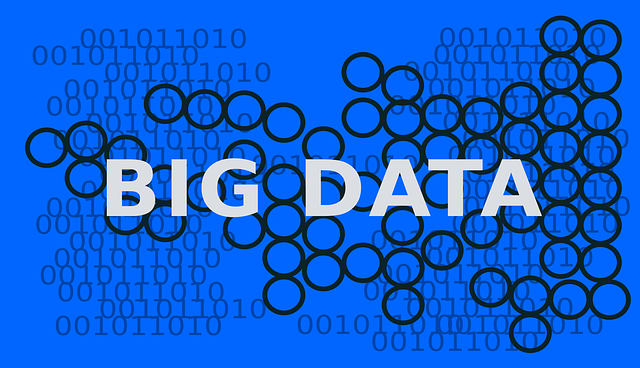In today’s fast-paced business environment, managing and analyzing vast amounts of data is more critical than ever. With the advent of big data and analytics, companies can unlock hidden insights and make data-driven decisions that give them a competitive edge. From improved forecasting and prediction capabilities to enhanced customer experiences, the benefits of data and analytics for businesses are numerous.
In addition, big data and analytics can help companies improve their decision-making capabilities. Businesses can make more informed and accurate decisions by providing real-time access to large amounts of data. This can lead to improved forecasting and prediction capabilities, increased efficiency and productivity, and better resource allocation. Big data and analytics also help companies personalize their products and services, leading to enhanced customer experiences. The team at Managed IT Services Houston helps companies to leverage the power of big data and analytics.
In this blog, we will delve into the top benefits of big data and analytics for businesses and explore how companies can use these technologies to stay ahead of the curve.
Top 6 Benefits of Big Data and Analytics for Businesses
- Unlocking the Power of Decision Making
Big data benefits organizations by making data-driven decisions rather than relying on intuition or guesswork. By leveraging advanced analytics tools, businesses can turn raw data into actionable insights that can inform decisions at all levels of the organization. This leads to more accurate and informed decisions, resulting in improved business outcomes.
Moreover, big data can help organizations identify and mitigate risks by identifying patterns that could indicate a potential problem, such as detecting fraud or identifying a product defect before it becomes a significant issue.
- The Key to Increased Efficiency and Productivity
One of the major benefits of big data is to streamline processes by identifying bottlenecks and inefficiencies. By analyzing data from different parts of the organization, businesses can identify areas where processes can be improved, leading to faster and more efficient operations.
In addition, big data can help organizations to allocate resources better by providing insights into where they are most needed. Businesses can optimize resource allocation by analyzing data on customer demand, production capacity, and other factors, leading to increased efficiency and productivity. So, big data also impacts better forecasting and planning. By analyzing data on past performance, businesses can make more accurate predictions about future demand, allowing them to plan more effectively and avoid costly mistakes.
- Gaining a Competitive Edge
In today’s competitive marketplace, staying competitive is more important than ever. One way to achieve this is by leveraging big data and analytics. By collecting, storing, and analyzing vast amounts of data, organizations can gain insights that were once impossible to uncover. This can give them a significant competitive advantage over their rivals.
Big data and analytics can gain a deep understanding of customers. By analyzing data on customer behavior and preferences, businesses can identify new market opportunities, optimize product offerings, and improve customer engagement. It can increase sales and customer loyalty, giving companies a competitive edge.
- Enhancing Customer Experiences
Providing a superior customer experience is one of the most crucial aspects of business success. And one-way businesses can achieve this is with the power of big data and analytics. Big data and analytics can help organizations identify and anticipate customer needs. By analyzing data on customer interactions, businesses can identify trends and patterns that can help to predict future customer needs. It allows them to proactively adapt their products, services, and customer support, which can lead to improved customer satisfaction.
Additionally, big data and analytics can help organizations to detect and resolve customer complaints quickly. By identifying patterns in customer feedback, businesses can identify common issues and take action to resolve them on time. It can lead to improved customer satisfaction and loyalty.
- Predictive Analytics
Big data and predictive analytics are a powerful combination that can help organizations to unlock the value of big data and make data-driven decisions. Using predictive analytics with big data can identify patterns and trends in data that would be impossible to uncover with smaller data sets.
Predictive analytics can also help organizations to anticipate future trends and identify potential risks and opportunities. By analyzing historical data and identifying patterns, businesses can make more accurate forecasts about future performance. This can inform budgeting, staffing, and other resource allocation decisions, helping organizations to be more proactive and responsive to changes in the market. It also helps to improve business operations and processes. By identifying patterns and trends in data, businesses can identify areas for improvement and take action to optimize their operations.
- A Key Tool for Compliance and Security
Big data and analytics can play a crucial role in ensuring compliance and security for organizations. With the ability to collect and analyze vast amounts of data, these tools can help organizations identify potential risks and vulnerabilities and protect their assets and sensitive information.
Big data analytics benefits organizations in the context of compliance and security is the ability to identify trends and abnormalities in data that may indicate a security threat. By analyzing data from various sources, such as network logs and user activity, businesses can identify potential security risks and take action to mitigate them. In addition, it can help businesses to improve their incident response and disaster recovery capabilities. It also enables companies to anticipate potential threats and plan to respond quickly and effectively.
Conclusion
In a world where data is constantly growing and changing, big data and analytics have become essential tools for businesses to stay competitive and relevant. By harnessing the power of big data and analytics, organizations can gain valuable insights, make data-driven decisions, and optimize their day-to-day operations to drive success. The benefits of big data and analytics extend across various aspects of business, from improving decision-making to gaining a competitive edge and enhancing customer experiences. As the amount of data continues to grow, big data and analytics will play an increasingly vital role in helping businesses navigate the complexities of the digital landscape.
Post courtesy: Scott Young, President at PennComp LLC.



 How to7 years ago
How to7 years ago


 More4 years ago
More4 years ago


 More6 years ago
More6 years ago


 Interview4 years ago
Interview4 years ago


 Other Internet Tech6 years ago
Other Internet Tech6 years ago


 More6 years ago
More6 years ago


 Business Ideas6 years ago
Business Ideas6 years ago








